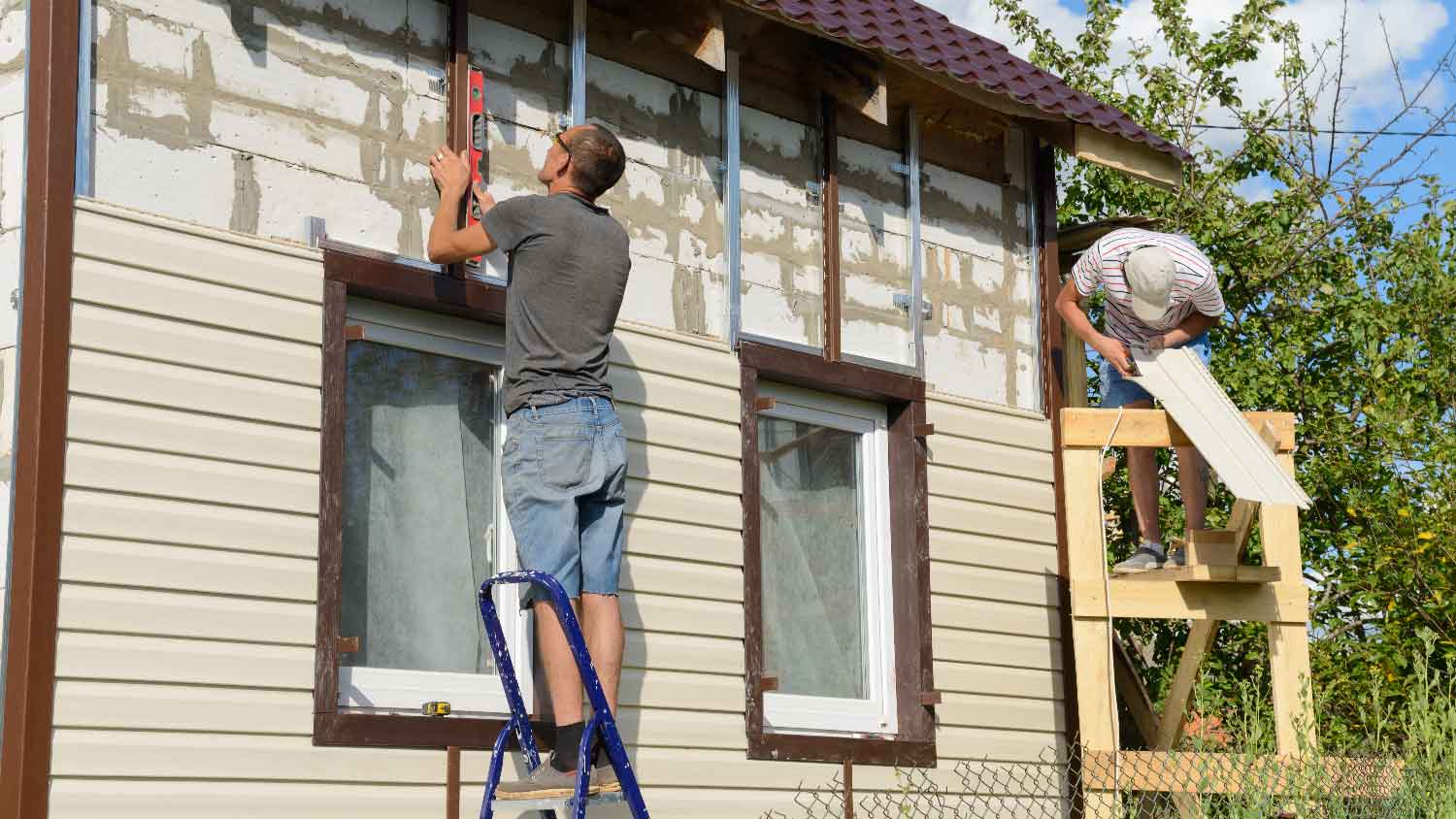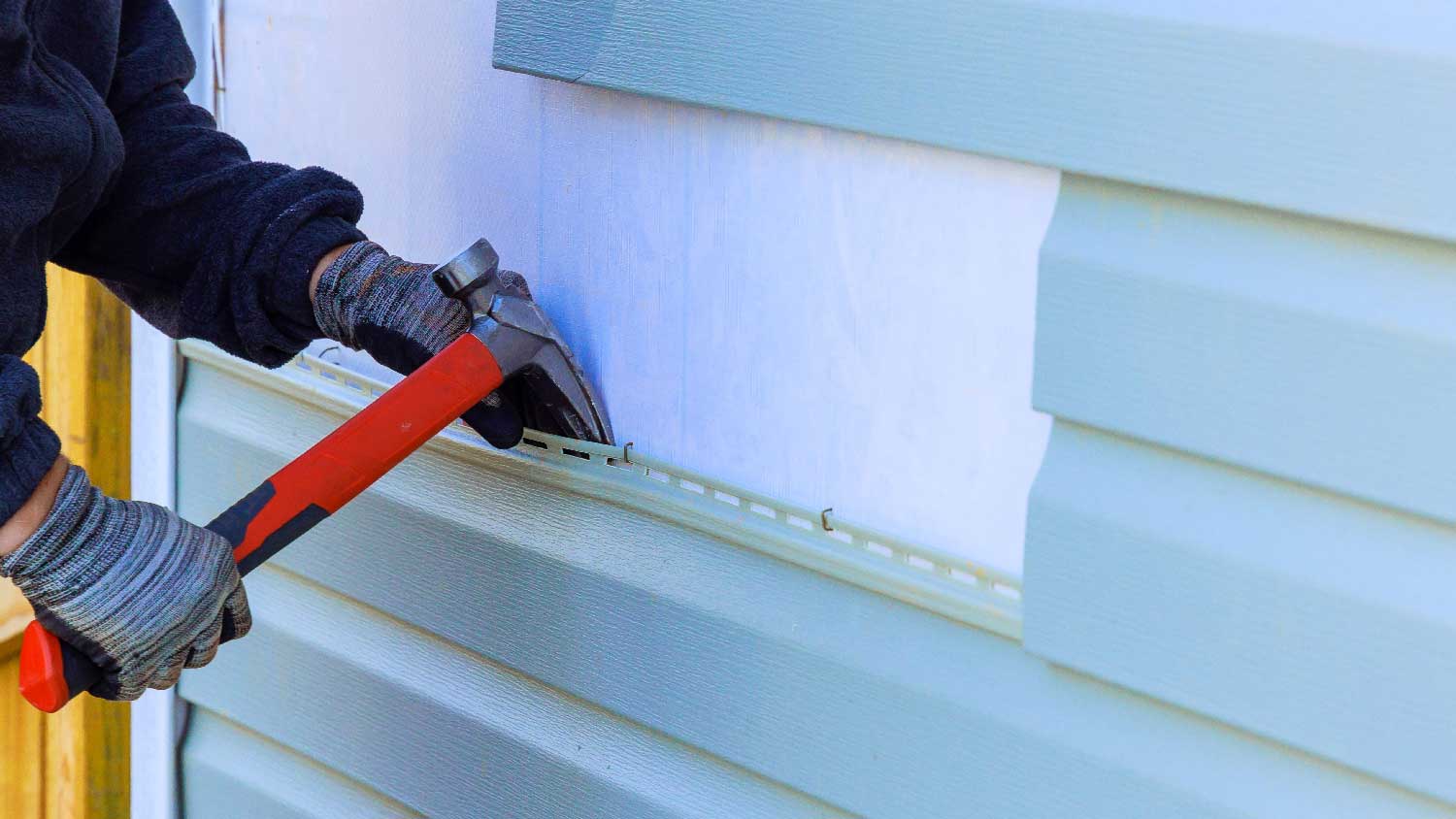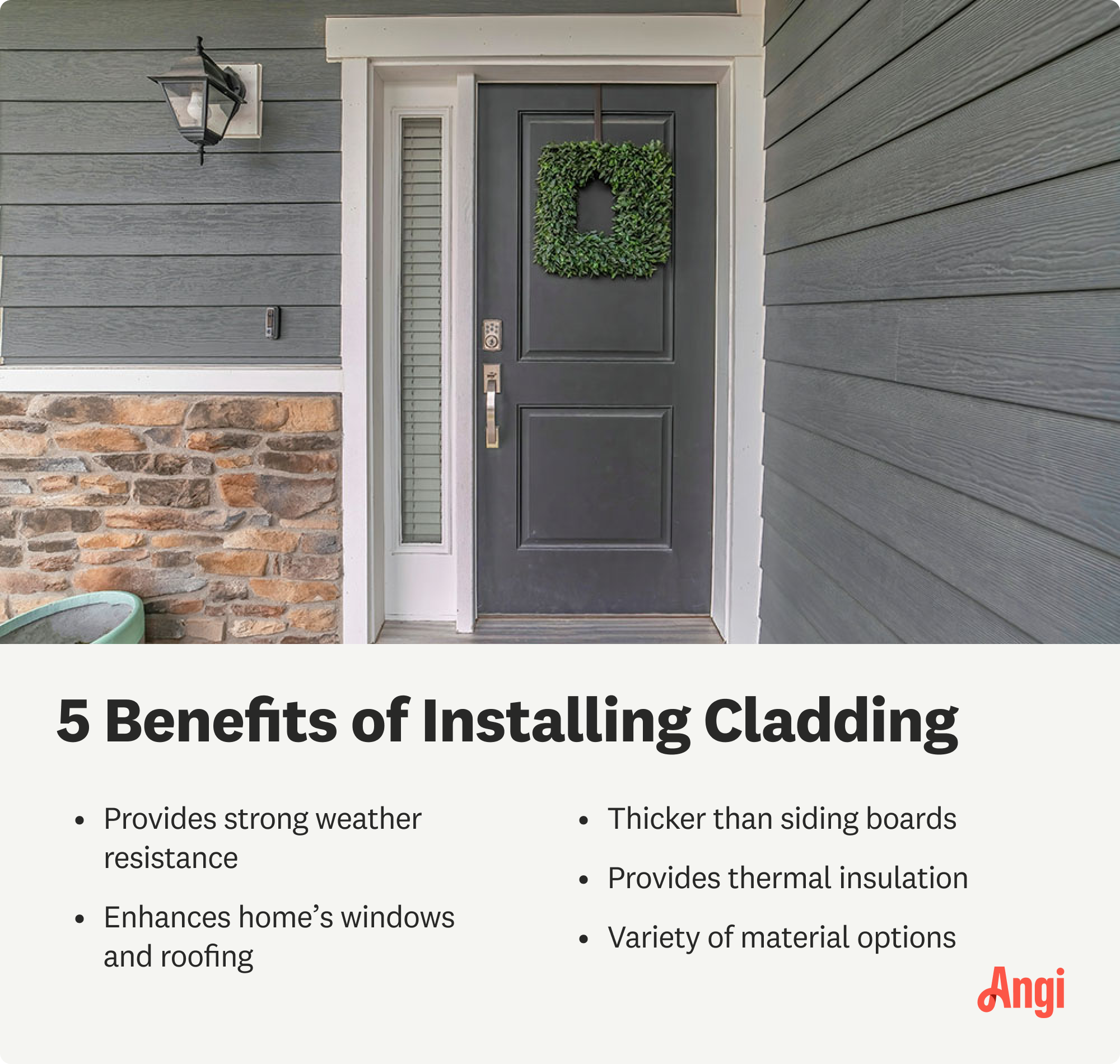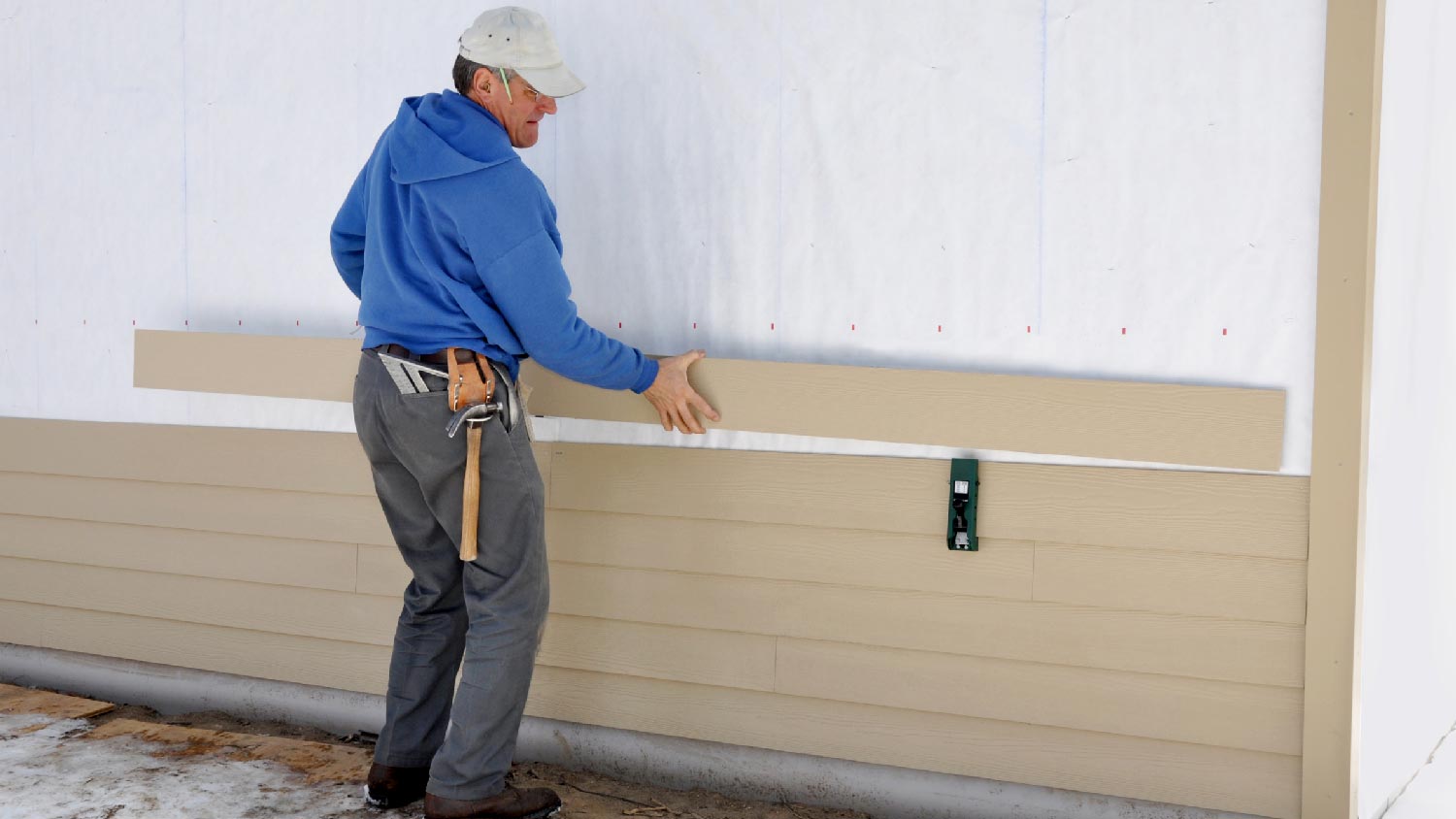
Vinyl siding boosts home value in Chicago with better curb appeal, water protection, and energy efficiency. Explore Chicago vinyl siding installation costs.
The average house cladding cost ranges from $16,000 to $28,000, with an average of $22,000. You’ll pay more for premium materials such as a weatherboard and stone veneer.


The average cost of house cladding is $22,000, with most projects ranging from $16,000 to $28,000 to clad a 2,000-square-foot home. Depending on the materials, house cladding costs can range anywhere from $6,000 to $60,000.
Unlike traditional siding, cladding is a non-weight-bearing, multi-layered system that sits on top of several layers designed to control insulation, moisture, and airflow. It improves your home's energy efficiency and durability, plus it offers a sleek, modern aesthetic. Whether you’re addressing energy efficiency, weather protection, or just giving your home exterior a complete refresh, cladding is a durable option.
Cladding tops siding in terms of cost, but it also offers superior insulation and moisture control. Still, while siding might not offer the same level of insulation and moisture control as cladding, modern siding options like insulated vinyl can still provide decent energy efficiency.
Compare the costs of these traditional siding options against your house cladding cost to find out what works best for your goals and budget:
Vinyl siding costs: $3–$12 per square foot
Insulated vinyl siding costs: $4–$12 per square foot
Wood siding costs: $3–$10 per square foot
Shingle siding costs: $6–$11 per square foot
Vinyl log siding costs: $4–$11 per square foot
Metal siding costs: $1–$35 per square foot

The average cost of house cladding ranges from $3 to $30 per square foot, including labor and materials. Here’s how costs break down for the most common cladding materials.
| Cladding Material | Average Cost per Square Foot |
|---|---|
| EIFS | $8–$14 |
| Aluminum | $5–$30 |
| Stone Veneer | $15–$30 |
| Wood | $3–$25 |
| Vinyl | $3–$16 |
| Weatherboard | $18–$30 |
The average cost of house cladding ranges anywhere from $3 to $30 per square foot. The size of your home, as well as its shape and architectural features, determines how much cladding you need. Here’s what the average costs look like for these standard home sizes.
| Home Size in Square Feet | Average Cost |
|---|---|
| 500 | $1,500–$15,000 |
| 1,000 | $3,000–$30,000 |
| 1,500 | $4,500–$45,000 |
| 2,000 | $6,000–$60,000 |
| 2,500 | $7,500–$75,000 |
| 3,000 | $9,000–$90,000 |
A significant portion of your house cladding cost will come from labor, which ranges from $5 to $9 per square foot. Siding contractors charge $40 to $75 per hour, depending on factors like the size and complexity of your installation. Additional project elements, such as old siding removal or working with intricate architectural features, can increase labor time and total cost.
Aside from materials and labor, here are the other factors to consider when planning your budget for this project.
The cost to remove old siding typically ranges from $0.25 to $0.75 per square foot, or around $500 to $1,500 for a 2,000-square-foot home. However, the total expense can vary depending on several factors, including the type of siding you’re dealing with, its age, and its overall condition. For example, if you have to remove brittle or hazardous materials like asbestos, it will require special handling, which can drive up the cost. Additionally, if the siding is older or in rougher shape, it might take more time and effort to remove safely.
Building permits can cost anywhere from $150 to $1,500, depending on local government requirements and the scope of the project. Smaller cladding jobs may not require a permit, so it’s essential to consult with a professional siding installer or check with your local municipality to confirm what you’ll need before starting this project.
Installing cladding isn’t a DIY-friendly job unless you have the proper skills and experience. While you’ll save roughly $5 to $9 per square foot in labor costs, the specialized tools and equipment needed can quickly take your budget higher than expected. Local building codes often require professional inspection and installation for siding projects, so it’s worth it to get everything right the first time and avoid costly fixes.
Hiring a professional local siding contractor ensures the job is completed correctly and efficiently, not to mention sparing you the stress of tackling cladding installation yourself. Contractors also often secure better pricing on materials, have extensive experience with the specific materials, and are well-prepared to manage potential risks. Improper installations can greatly reduce the lifespan of your cladding and may void manufacturer warranties, so hiring out is the way to go for this project.

One of the key advantages of hiring a professional cladding contractor is their ability to assess whether repairing or replacing your cladding is the most cost-effective solution. Repairs for small areas, such as a 10-square-foot section, average around $400, or roughly $40 per square foot. Minor issues like shallow cracks or small holes that haven’t caused water damage are generally more affordable to fix.
However, for more extensive damage, such as a 100-square-foot section, your contractor might suggest replacing the entire area to ensure structural integrity and a seamless appearance.
Consider the following tips for lowering the cost of adding or replacing house cladding.
Choose a budget-friendly material: Opt for cost-effective cladding materials like vinyl or wood instead of more expensive options like weatherboard or stone veneer.
DIY prep work: Remove old siding yourself (if local regulations allow) and with the proper tools and skills.
Time your project wisely: Schedule your cladding installation during the off-season when contractors may offer discounts or promotions.
Repair instead of replace: If only certain sections of your siding are damaged, consider repairing those areas rather than replacing the entire facade.
Use energy-efficient options: Invest in cladding materials with built-in insulation, such as EIFS. While this might increase upfront costs slightly, it could lead to long-term energy savings that can help offset the investment.

Upgrading your home's cladding can boost its value, especially if your current exterior is past its prime. Not only does cladding improve moisture control and energy efficiency, but it also increases your home's curb appeal with a range of modern colors and styles to choose from. Many cladding materials offer increased fire resistance and weatherproofing, making them a strong selling point for buyers looking for a secure, low-maintenance home. Plus, cladding with built-in insulation can help reduce energy costs, appealing to potential buyers who are eco-conscious or looking to save on utility bills.
Quality cladding protects your home from moisture, pests, and harsh weather, which can mean fewer expensive repairs down the line. As for the aesthetics, new cladding can make your house look modern and inviting, helping it stand out in a competitive market and potentially leading to quicker sales and better offers.
Home is the most important place on earth, which is why Angi has helped more than 150 million homeowners transform their houses into homes they adore. To help homeowners with their next project, Angi provides readers with the most accurate cost data and upholds strict editorial standards. We extensively research project costs to develop the pricing data you see, so you can make the best decisions for you and your home. We rely on reputable sources, including the U.S. Bureau of Labor Statistics, academic journals, market studies, and interviews with industry experts—all to ensure our prices reflect real-world projects.
Want to help us improve our cost data? Send us a recent project quote to [email protected]. Quotes and personal information will not be shared publicly.
From average costs to expert advice, get all the answers you need to get your job done.

Vinyl siding boosts home value in Chicago with better curb appeal, water protection, and energy efficiency. Explore Chicago vinyl siding installation costs.

New siding improves curb appeal, increases home value, and insulates your home. Learn about fiber cement siding installation costs in Chicago.

Thinking about replacing your siding? Our shou sugi ban siding cost guide will help you determine if this Japanese wood siding is within your budget.

This siding calculator will help you determine how much siding you need to cover each wall. Learn how to determine your siding area’s square footage.

When installing siding, you may find rotted boards underneath the old siding. Siding is your home’s first line of defense against the elements–rot causes damage that can spread, so learn about what to do when you discover rotted boards.

If you have woodpeckers pecking on your house, you may be at your wit's end. Read this to learn how to stop woodpeckers from pecking your house.